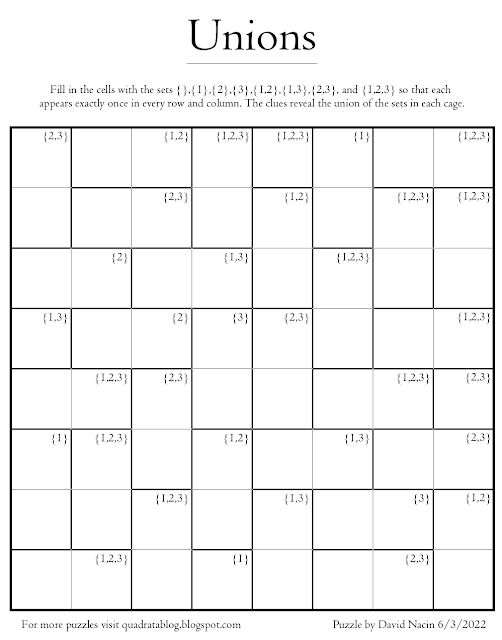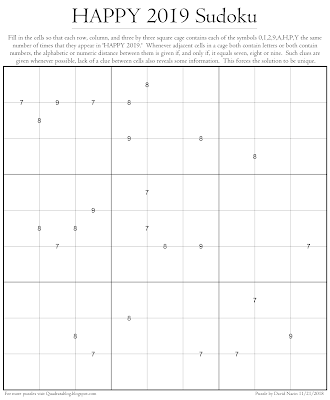Unions
A set is a (possibly empty) collection of objects. For example, the collection containing just the number 1 is a set and can be written as {1}. The collection containing 1, 2 and 3 is a set and can be written as {1,2,3}. We allow {} to represent the set containing no objects, commonly referred to as the empty set.
The union of two sets is the collection of all elements in either set. For some examples: the union of {1} and {2} is {1,2}, the union of {1} and {1,2} is also {1,2}, and the union of {1,2} and {2,3} is {1,2,3}. A set for which all the elements are contained in another set is called a subset of that set. For example, the subsets of {1,2} are {}, {1}, {2}, and {1,2}. The subsets of {1,2,3} are {}, {1}, {2}, {3}, {1,2}, {1,3}, {2,3}, and {1,2,3}.
In this puzzle we place the eight subsets of {1,2,3} into the cells so that each of the eight appears exactly once in each row and once in each column. The cage clues reveal the union of the sets in the cells of that cage. The union of just one set is considered to be itself.
The solution together with a PDF version can be found at the links below.



Comments
Post a Comment